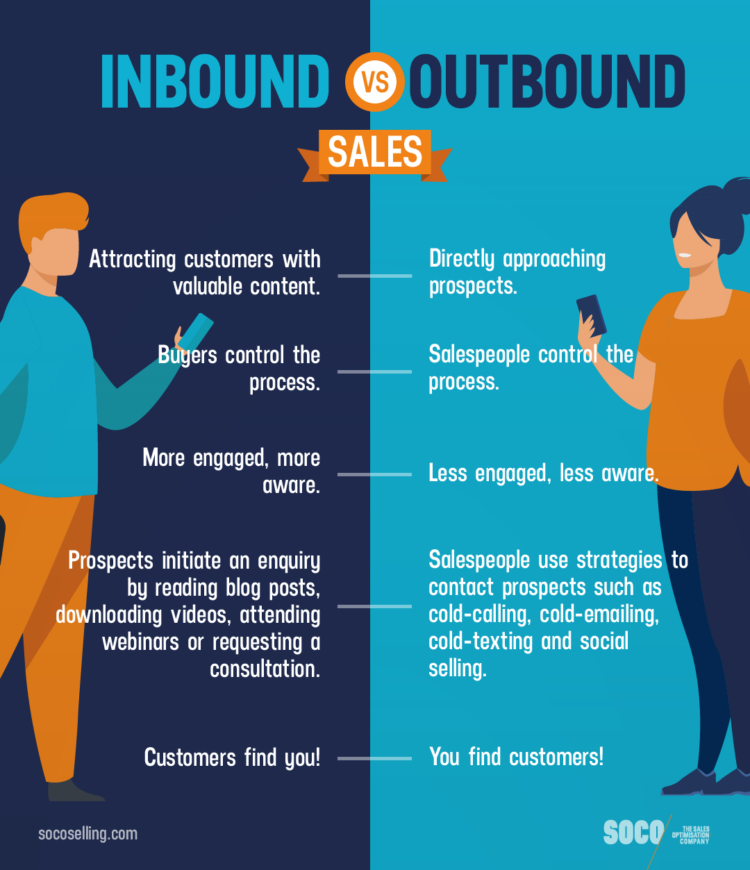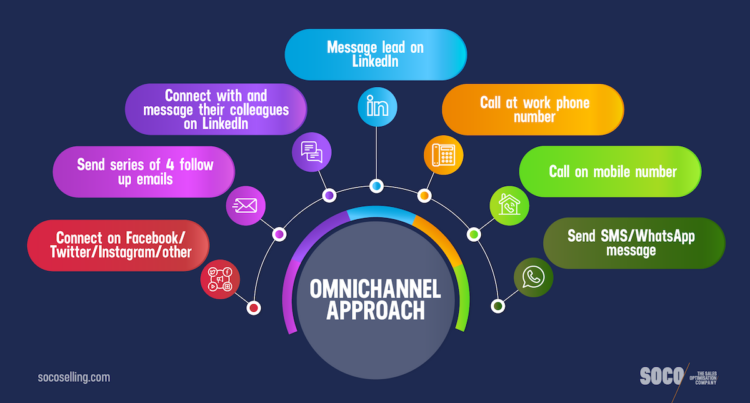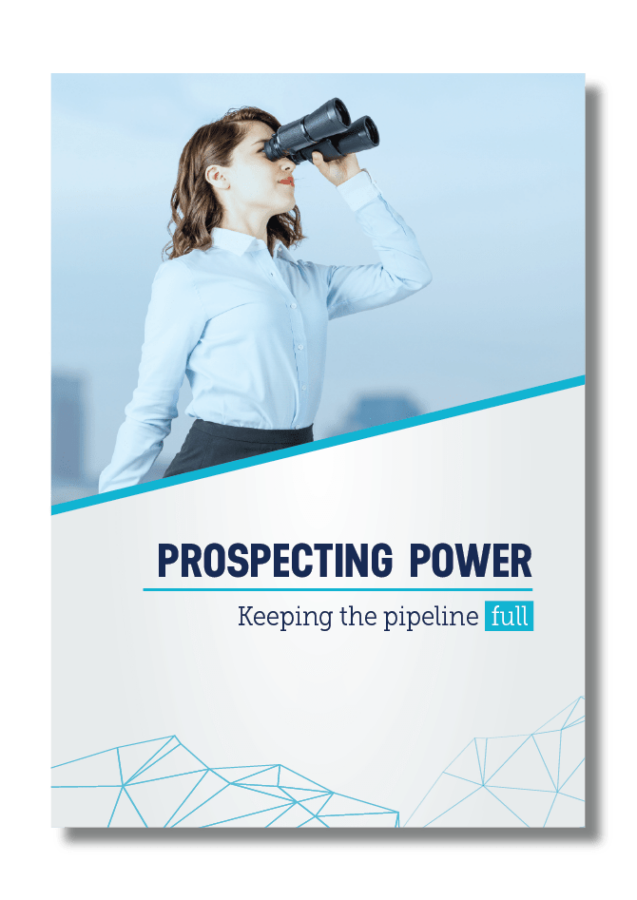
Many people associate outbound sales with unsavoury cold-calling techniques and mostly see it as a redundant and out-of-date sales approach. Well, we’re here to tell you that’s just not true. Times have changed, and so has the way that sales professionals use outbound sales strategies. For instance, did you know that beginning a cold call with “I understand we share a common LinkedIn group” raises your chances of securing a meeting by a whopping 70%? With this said, not many people know how to effectively use outbound sales as a successful sales strategy; that’s why we’ve created this ultimate guide full of techniques, best practices and strategies to help you get started.
“It is the cold that is dead – not the calling… I agree that no one should be “cold” calling anymore – meaning having a name & number, but lacking a compelling reason to call.”
Trish Bertuzzi
Also read:
- The Ultimate Guide to Different Sales Roles
- How to Build an Outbound Sales Team
- What it Takes to Qualify Prospects
What is Outbound Sales?
Outbound sales is the process of salespeople finding, contacting and engaging prospects to deliver sales pitches and make sales. While you may know cold calling as a classic example, there are plenty more modern approaches you can use in tandem to create an omnichannel approach. Ultimately, the defining feature of outbound sales is that you’re contacting leads rather than them contacting you – meaning there’s a whole lot more room for rejection and it takes reaching a lot more people to get 1 qualified lead.
Who Conducts Outbound Sales?
In most companies, outbound sales teams compromise of various dedicated sales professionals that roughly fall into four groups:
Sales Development Representatives (SDRs)
Sales Development Representatives (SDRs) are responsible for owning the prospecting process, including helping to qualify all leads at the initial stages of the sales funnel to create a short-list for Account Executives or the closers. They usually practice cold emailing and cold calling to contact and nurture potential buyers and are often found helping to scale start-ups looking to grow quickly or even when inbound leads aren’t enough to fill the pipeline.
Business Development Managers (BDMs)
Business Development Representatives/Managers (BDRS/BDMs) are similar in function to SDRs – they’re laser-focused on the organization’s customer base and excel in producing prospecting strategies.
The responsibility of the Business Development Manager is to identify prospects, effectively initiate the first outreach, successfully book meetings, and fill the pipeline to pass onto the closers.
Lead Response Reps (LRRs)
Lead Response Reps (LRRs) are responsible for creating opportunities for account executives by connecting with prospects who have come from inbound sources. Usually, this includes prospects who have shown interest by downloading a video/worksheet, completing a form on your website, reading your blog, or attending a webinar. Even though the lead has reached out to the company, they typically have not shown interest in a particular product or service, so the LRR’s process is very similar to an SDR, which is trying to turn a cold lead into a prospect.
The Difference Between Inbound and Outbound Sales
Inbound Sales is the process of prospects coming to you rather than you finding them. The process starts when a customer reaches out to a company with interest in a particular solution, often as the result of marketing or information on your website. These leads are considered ‘warm’, as they already have a need for your product or service.
Outbound Sales is the process of finding prospects who might be a good fit for your offer but aren’t aware of it yet. These leads are considered ‘cold’ because they haven’t asked for more information or shown interest in any of your products or services. Outbound sales require reaching a much larger number of potential customers to generate 1 qualified lead.

Inbound Sales Vs Outbound Sales, Which is Better?
While it takes fewer inbound leads to generate 1 closed deal, outbound allows you to target the ideal customers that might not know about you yet. Inbound is more of a passive approach to sales, while outbound is a more proactive approach to filling the pipeline. Neither is better than the other; they each have different pros and cons.
The Advantages of Outbound Sales
- Target your ideal customer: Inbound leads can vary in quality and might not be a good fit for your solution. With outbound, you can target your ideal customers who should already have a budget and a need for your solution.
- Get quicker feedback: Outbound allows you to get immediate feedback on your offerings. If you reach out to prospects and they reply with “I’m already using X” or “It’s too expensive for what it does” or “I don’t need it because of X”, you can get quick insights into your offering, which can allow you to pivot faster than waiting for leads to reach out to you.
- A proactive approach: Unlike inbound sales, you’re not waiting for leads to discover, trust, like, and then take action to approach you – so if they’re not interested or need to talk later about your offering – you know exactly where you stand.
The Disadvantages of Outbound Sales
- Need to target a very large audience to generate a small quantity of quality leads: Since there’s a good chance the majority of the people you’re reaching out to aren’t actively seeking a solution like yours, you’re going to have to connect with a lot of people to find the ones that are.
- Longer sales cycle: Again, since most of the people you’re reaching out to don’t have a pressing need for your solutions, it can take months for it to be the right time for them to buy.
- It can affect your reputation: Unfortunately, with outbound sales, the chances of annoying prospects are much higher. If you continue to irritate prospective customers, it can damage your reputation.
- Less probable success: While outbound sales are typically faster and easier to implement, it doesn’t equal instant success – especially now that prospects are tired of the old cold-calling tactics.

What is the Outbound Sales Process?
You know the definition, but now let’s explore the individual steps in the outbound sales process:
1. Identify Ideal Leads
The first step in the outbound sales process is identifying your ideal target audience – the people or businesses who are most likely to buy from you. To do this, think about who has a need for and can afford your solution.
Also read: 5 LinkedIn Outreach Tricks To Generate High-Quality B2B Leads
2. Divide and Conquer with Market Segmentation
The next step in the outbound sales process is to divide up your ideal target audience using market segmentation. By doing this, you’ll be able to send more personalised messages that speak to the specific needs of the different groups.
3. Identify and Approach Decision Makers
If you want to maximise your chances of securing new deals, you need to make sure you’re selling to the right person. A decision-maker is a person who can decide whether to go ahead with a project or not. If you’re selling to the wrong person, all you’re going to hear are ‘no’s because that’s all they can say.
To identify the decision maker at a company, you want to look for some of these key criteria:
- Job title – A key decision maker will often be an executive, manager, director or vice president.
- Manages budget – Someone that has the authority to make purchasing decisions on behalf of their company or department
- Oversees strategy – People who are responsible for implementing strategy at their company are often looking to solve problems their company is facing.
If you’re selling to C-suite, these buyers are even more demanding than those lower down in the company. Make sure to read our ultimate guide to selling to the c-suite to start successfully selling to c-level executives.
4. Send Personalised Emails/Cold-Calls
With the average professional receiving around 100 emails a day, you have to find a way to stand out in their inbox. Start by grabbing their attention with an effective email subject line, then tell them why they can’t live without your solution in the email body. The best emails are personalised to the person you’re targeting and will maximise your results.
Also read: Best Outbound Email Sequence Template for Generating Leads
5. Use the Right Tools to Scale your Process
Finally, you need the right tools to be able to scale your outbound sales process. Your outbound sales reps are hunters bringing in new leads, so they need the tools to match. Using an outbound sales technology stack is crucial because, these days, having just a CRM tool is no longer enough to keep in touch with customers and find new prospects effectively. You need to automate time-consuming, repetitive, and laborious tasks to give time back to your sales team, allowing them to do what they do best.

What are the Most Important Outbound Sales Metrics?
- Sales Cycle Time: An indication of, on average, how long it takes to go from lead to closed deal.
- Calls to Close Ratio: The average number of calls the rep needs to make to close a deal.
- Cost per Opportunity: The calculated cost of generating a single opportunity.
- Lead Conversion Rate: The number of qualified leads that result in a sale.
- Average Deal Size: Knowing your average deal size allows you know how much you can spend to generate an opportunity and still be profitable.
Common Outbound Sales Objections
Any good salesperson will anticipate and prepare for any objections that may come their way; however, we know outbound sales objections can be rather tricky. To make your process smoother, study three of the most common outbound sales objections and how to overcome them quickly below.
More of an objection hater than an objection handler? Check out our Ultimate Guide To Objection Handling to start overcoming any type of objection straight away.
“Can you just send me an email?”
Ouch! When a prospect says this, you know they want to get you off the phone as quickly and politely as possible. The solution to keeping them on the line? Get them to keep giving you information by saying something like, “Sure!, but so I know precisely what to include in my email, can you tell me [your first qualifying question]? “
“It’s not the right time for me to make a decision.”
Fair enough, this prospect can’t make an immediate decision as they’re probably on a committee. Not a problem! Just tell them the next steps to visualise what needs to happen for the deal to move forward; that way, the next time you talk, it will either be a definite yes, or no – without further delay from their side.
“I can’t discuss this particular issue right now.”
Another outbound sales objection related to wanting to get you off the phone as quickly as possible! The way to overcome this one is to provide them with a specific time and date when you can follow up with them, such as: “No worries, is 15 minutes on Thursday at 3pm a good fit for you? I’m curious to see if we’re even a good fit before we talk further.”
Common Outbound Sales Techniques
Believe it or not, there are a few different ways to do outbound sales successfully. We discuss and compare these approaches below to help you choose one that suits your outbound sales strategy:
1. Cold Calling
Probably the most widely known outbound sales technique, cold calling is the process of conducting unsolicited calls to an ideal target customer with the goal of selling your offering – this can be done either by phone or in person.
Many sales professionals and marketers believe cold-calling is dead due to the nature of this classic outbound sales technique. With cold-calling, you’re actively trying to sell to people who are actively trying to avoid answering your call and hearing your sales pitch. While it may seem like a redundant sales relic in this new era of Social Selling, it still works, especially when paired with other outreach methods and a strong marketing campaign.

Also read: How to Master the Art of Cold Calling
2. Cold Emailing
A much less intrusive friend of cold-calling, cold-emailing is a budget-friendly outbound sales prospecting technique for generating leads. This approach uses cold emails of value or offers sent to prospects in the hopes of initiating contact with prospective customers.
Also read: Best Outbound Email Sequence Template for Generating Leads
3. Social Selling
Social Selling is the practice of incorporating social networks into your sales process at every stage – from prospecting to positioning to presenting – you can do it all, right up to signing the document. Social media selling provides modern-minded sales professionals with the opportunity to engage with future customers directly without even picking up the phone: no more buying lists, cold calls or gatekeepers. The best part? Social Selling doesn’t replace the sales fundamentals but instead evolves them!
Using LinkedIn to prospect for leads? Check out: 5 LinkedIn Outreach Tricks To Generate High-Quality B2B Leads
Best Practices for Outbound Sales
Now that you know precisely what outbound sales are and what techniques you should be using to ensure your efforts are successful – you need to discover the several outbound sales best practices required for an efficient process:
1. Use an Omni-Channel, Multi-Touch Approach

To get the best results from your outbound efforts, adopt an omnichannel approach. This is where you don’t only reach out on phone or email, you connect with the prospect using multiple platforms. Without this, you may not get your prospects’ attention or, worse, find them in a place where they’re not most comfortable engaging with salespeople.
2. Automate as Much as Possible
A hidden benefit of modern outbound sales is that they can be largely automated. There are various technology tools you can use to automate just about every step of the process. There is a program for everything from sourcing your leads to sending cold email campaigns, following up and tracking metrics. Not sure where to start? Discover the Essential Sales Technology Stacks for Professionals.
3. Create a Guideline Script or Email Template
When it comes to cold calling, have you created a compelling script for scheduling appointments that will resonate with your prospects? The most important thing to remember here is, don’t wing it! Without a structure or plan, you leave too many things open to chance – leaving you with the opportunity to lose control of the call. But don’t read your script- instead, know your script. Practising in front of the mirror and rehearsing it with colleagues and your coach can be very effective.
Most salespeople naturally begin the conversation by asking, “how are you?” but that can sometimes appear insincere and isn’t that productive. Try asking, “have you got two minutes?” to show that you respect their time.
Be sure to use your qualifying questions to avoid wasting time and ensure you’re speaking to the right person. Finally, always use language that resonates with your prospect and shows that you understand their challenges.
Alternatively, if cold-emailing is your focus, always it’s best first to understand the makeup of an excellent sales prospecting email. Check it out below:
1. A reason: You know what your company is offering – but what is the value to your prospect? Simply having the lure of a new product release or special promotion isn’t enough – prospects want to know what’s in it for them.
2. A pressing reason: What’s the actual reason your prospects should move to action? Tell your prospect why you’re reaching out – and what’s in it for them.
3. A CTA: Tell your prospect explicitly what you want them to do next, whether that’s meet with you for a 15-minute phone call or ask them to sign up to your newsletter for more actionable, helpful tips.
Are you looking for a helpful sales prospecting email template? Copy and paste one of our best sales email templates and start connecting with prospects today. Don’t forget to grab one of our best sales email subject lines that will increase your open rates and, hopefully, your responses!
4. Incorporate Social Selling
Social Selling is the practice of incorporating social networks into your outbound process. This most commonly includes using social platforms to find and connect with prospects. LinkedIn is by far the most commonly used social platform for outbound sales.
If you’re not sure where to start when it comes to Social Selling, read our Complete Guide to Social Selling here.

5. Have a Proven Sales Cadence
A sales cadence (also known as a sales sequence) is a series of sequential scheduled touchpoints to connect with prospects to convert them later in the sales cycle – usually spaced out over a fixed number of days and weeks.
The sales cadence starts with the first point of contact; then, sales reps follow up with a series of interactions such as phone calls, emails, or social messages until the sales prospect has converted into a paying customer.
While the type of cadence will differ significantly depending on who they’re targeting and what you’re selling, the key to a successful approach is that the frequency, method of contact, and communication time need to be structured and consistent.
Read 9 Tips for Developing an Effective Sales Cadence
Discover a New Way to Generate Leads
Like blood to a body, a full sales pipeline is necessary for your business to survive. The thing is, prospecting has evolved, and old methods just aren’t effective anymore.
In our Prospecting Power training we teach participants how to ensure your customer acquisition strategy is creative, persistent and, most importantly, generates real results.


